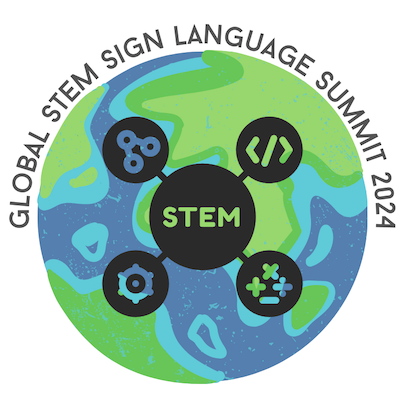Preliminary Investigation on the Effectiveness of Technical ASL for Teaching STEM Content
Loading...
Location
Gallaudet University - JSAC Multipurpose Room
Start Date
2-3-2024 1:30 PM
End Date
2-3-2024 2:00 PM
Description
Many teachers and interpreters struggle to explain STEM concepts in American Sign Language (ASL) due to the lack of standardized signs for many STEM concepts. In response, many STEM ASL lexicons have emerged over the past two decades, often featuring contributions from deaf STEM professionals who use sign language. However, little research has been done to explore the effectiveness of those signs in supporting deaf and hard of hearing (DHH) students’ conceptual understanding. We propose that more conceptually motivated signs allow for clearer and more accurate depictions of the content, decreasing the cognitive load needed to learn. To test this hypothesis, we will compare learning outcomes for content delivered in two different signing styles: manually coded English (MCE) and technical ASL (tASL). Participants will view two MCE lectures, counterbalanced with two tASL lectures. We will analyze the differences in within-subject improvement between pre- and post-assessments for MCE vs. tASL. Assessments will include multiple-choice questions across a range of complexity. We predict that scores will increase more for tASL than MCE lectures, indicating improved learning. This exploratory study establishes a foundation for future neuroscience research investigating how conceptually motivated signing of STEM content can support learning through increased communication clarity and decreased learning anxiety.
Recommended Citation
Sortino, Rachel, "Preliminary Investigation on the Effectiveness of Technical ASL for Teaching STEM Content" (2024). Global Year of STEM Sign Language Summit. 9.
https://ida.gallaudet.edu/global_STEM_signlanguage/STEM_signlanguagesummit/day_1/9
STEM SLS 02.03 MPR 07 Rachel Sortino.mp4 (1508514 kB)
STEM SLS 02.03 MPR 07.pptx (101723 kB)
Preliminary Investigation on the Effectiveness of Technical ASL for Teaching STEM Content
Gallaudet University - JSAC Multipurpose Room
Many teachers and interpreters struggle to explain STEM concepts in American Sign Language (ASL) due to the lack of standardized signs for many STEM concepts. In response, many STEM ASL lexicons have emerged over the past two decades, often featuring contributions from deaf STEM professionals who use sign language. However, little research has been done to explore the effectiveness of those signs in supporting deaf and hard of hearing (DHH) students’ conceptual understanding. We propose that more conceptually motivated signs allow for clearer and more accurate depictions of the content, decreasing the cognitive load needed to learn. To test this hypothesis, we will compare learning outcomes for content delivered in two different signing styles: manually coded English (MCE) and technical ASL (tASL). Participants will view two MCE lectures, counterbalanced with two tASL lectures. We will analyze the differences in within-subject improvement between pre- and post-assessments for MCE vs. tASL. Assessments will include multiple-choice questions across a range of complexity. We predict that scores will increase more for tASL than MCE lectures, indicating improved learning. This exploratory study establishes a foundation for future neuroscience research investigating how conceptually motivated signing of STEM content can support learning through increased communication clarity and decreased learning anxiety.


